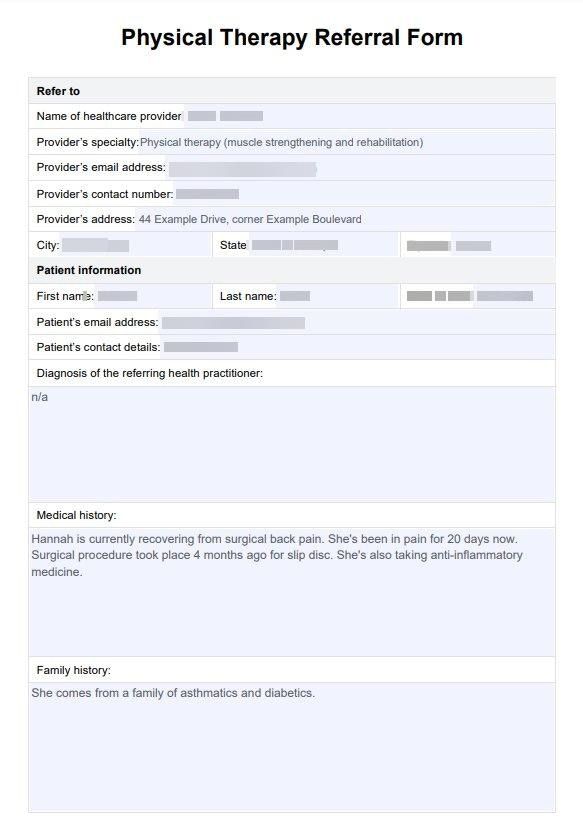Use Case Overview
Document redaction is essential for privacy protection and regulatory compliance. This workflow automatically identifies sensitive information like names, addresses, social security numbers, and other PII, then creates a redacted version suitable for sharing while maintaining document readability.Workflow Steps
Try it out yourself with the following prompt (in Claude Desktop or Web): “Can you redact all the personally identifiable information of the patient in the following image https://www.carepatron.com/files/physical-therapy-referral-form-sample-template.jpg and provide a link to the redacted image.” The agent should be able to use the following tools to accomplish the task: I’ll help you redact the personally identifiable information from that medical form. Let me first load the image and then identify the PII that needs to be redacted.1
Load the document image
Use the Response:
put_image_url tool to load the document image into the system for processing.2
Extract text and identify PII
Use the Response: The tool returns bounding boxes for all detected text regions, including sensitive information like patient names, addresses, and medical record numbers.
detect_texts tool to extract all text from the document and identify regions containing personally identifiable information.3
Create redacted version
Use the Response: Creates a new redacted image with sensitive information blurred out.
blur_bboxes tool to blur the identified sensitive regions, creating a privacy-compliant version of the document.4
Generate preview
Use the Response:
preview_object_ref tool to generate a shareable URL for the redacted document.Example Result
Build-your-own Redaction Workflow
In this example, we showed how easy it is to build your own document-redaction pipeline with VLM Run MCP tools. You can use the same approach to build your own document processing pipeline for any industry-vertical.- 🏥 Healthcare: Patient intake forms, medical records, insurance documents
- 📄 Legal: Contracts, court documents, legal correspondence
- 💰 Financial: Bank statements, tax documents, loan applications
- 💼 HR: Employee records, payroll documents, benefits information
- 📦 Marketing: Product catalogs, marketing materials, sales proposals
- 🏠 Real Estate: Property listings, lease agreements, inspection reports
- 📊 Insurance: Policy documents, claims forms, insurance applications

